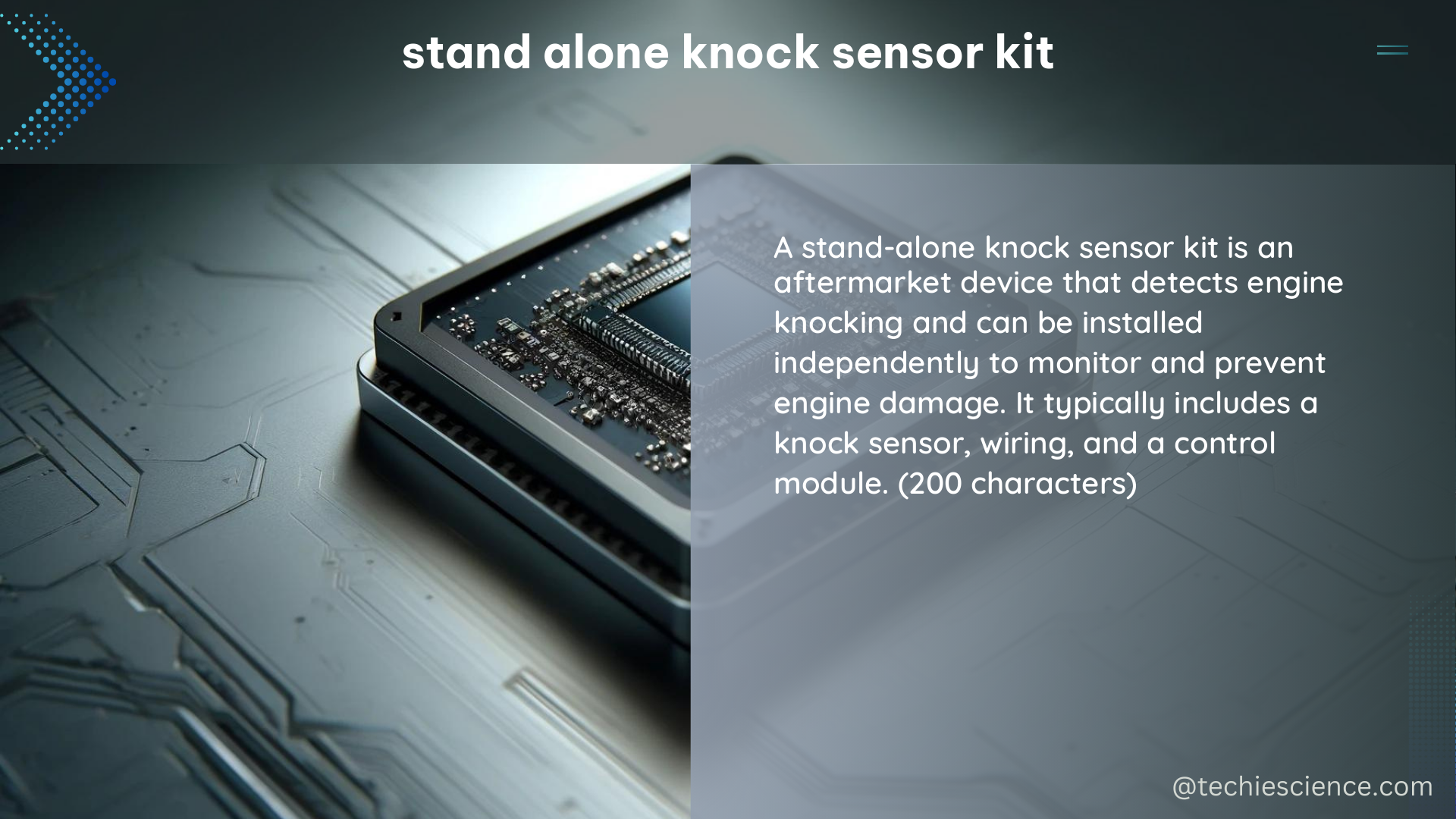A standalone knock sensor kit is a device that can detect engine knocking or detonation, a condition where the air-fuel mixture in an engine’s cylinder ignites too early, causing a knocking or pinging sound. The kit typically includes a knock sensor, a piezoelectric device that converts mechanical vibrations into electrical signals, and a controller or module that processes these signals to detect knocking.
Understanding the Knock Sensor
The knock sensor is the heart of a standalone knock sensor kit. It is typically a piezoelectric device that generates an electrical signal in response to mechanical vibrations caused by engine knocking. The sensor’s sensitivity can be adjusted to detect different levels of knocking, with a higher sensitivity setting detecting more subtle knocking and a lower sensitivity setting detecting only severe knocking.
Piezoelectric Principle
The knock sensor’s piezoelectric crystal generates a voltage signal when subjected to mechanical stress or vibration. This voltage signal is then processed by the controller or module to detect the presence and intensity of engine knocking.
Sensor Specifications
The technical specifications of a standalone knock sensor kit can vary depending on the manufacturer and model, but some common specifications include:
| Specification | Description |
|---|---|
| Sensor Type | Most knock sensors are piezoelectric, using a piezoelectric crystal to generate a voltage signal. |
| Sensor Sensitivity | The sensitivity of the knock sensor can be adjusted to detect different levels of knocking. A higher sensitivity setting will detect more subtle knocking, while a lower sensitivity setting will only detect more severe knocking. |
| Input Voltage | The controller or module that processes the knock sensor signal typically requires a DC power supply, such as 12V or 24V. |
| Output Signal | The controller or module will typically provide an analog or digital output signal that can be used to trigger an alarm or activate a warning light. |
| Mounting | The knock sensor is typically mounted to the engine block or cylinder head using a threaded stud or bolt. |
Installing a Standalone Knock Sensor Kit

To install a standalone knock sensor kit, you’ll need to follow these steps:
-
Locate the Mounting Location: Identify a suitable location on the engine block or cylinder head to mount the knock sensor. This location should be close to the cylinders and provide a secure mounting point.
-
Install the Knock Sensor: Use the provided mounting hardware, such as a threaded stud or bolt, to securely install the knock sensor in the chosen location.
-
Connect the Knock Sensor: Connect the knock sensor to the controller or module using the provided wiring. Ensure a secure and reliable connection.
-
Connect the Controller/Module: Connect the controller or module to the vehicle’s power supply and ground. Refer to the manufacturer’s instructions for the appropriate power and ground connections.
-
Configure the Settings: Configure the controller or module settings to match the engine and sensor specifications. This may include adjusting the sensor sensitivity, input voltage, and output signal parameters.
-
Test the System: Induce knocking or detonation in the engine, such as by advancing the ignition timing or increasing the engine load, to ensure the knock sensor is functioning correctly and triggering the appropriate output signals.
Standalone Knock Sensor Kit Examples
Here are some examples of standalone knock sensor kits available on the market:
-
Woolich Racing Software and Hardware Package for Yamaha MT-09: This kit is designed to work with tuning software and can be used to flash the bike’s ECU. It is suitable for engines that are not equipped with a knock sensor from the factory, such as the Yamaha MT-09.
-
MSD Standalone Knock Sensor: MSD offers a standalone knock sensor kit that can be used with a variety of engine configurations. The kit includes the knock sensor, a controller module, and all necessary wiring and mounting hardware.
-
PLX Devices R-500 Programmable Knock Sensor Interface: The R-500 is a programmable knock sensor interface that can be used with a variety of knock sensors. It provides advanced features such as adjustable sensitivity and the ability to integrate with other engine management systems.
-
Bosch Knock Sensor: Bosch is a well-known manufacturer of automotive sensors, including knock sensors. Their standalone knock sensor kits are designed for a wide range of engine applications and can be integrated with various engine management systems.
Conclusion
A standalone knock sensor kit is a valuable tool for engine tuning and performance optimization. By accurately detecting and responding to engine knocking, these kits can help prevent engine damage and allow for more aggressive tuning. With a wide range of options available, it’s important to carefully select a kit that meets your specific engine requirements and tuning goals.
References
- Woolich Racing Software and Hardware Package for Yamaha MT-09
- Stand-Alone Knock Sensor
- Knock Sensor Read
- Stand-Alone Knock Sensor
- Does Anyone Use External/Aftermarket Knock Sensor Tuning?

The lambdageeks.com Core SME Team is a group of experienced subject matter experts from diverse scientific and technical fields including Physics, Chemistry, Technology,Electronics & Electrical Engineering, Automotive, Mechanical Engineering. Our team collaborates to create high-quality, well-researched articles on a wide range of science and technology topics for the lambdageeks.com website.
All Our Senior SME are having more than 7 Years of experience in the respective fields . They are either Working Industry Professionals or assocaited With different Universities. Refer Our Authors Page to get to know About our Core SMEs.